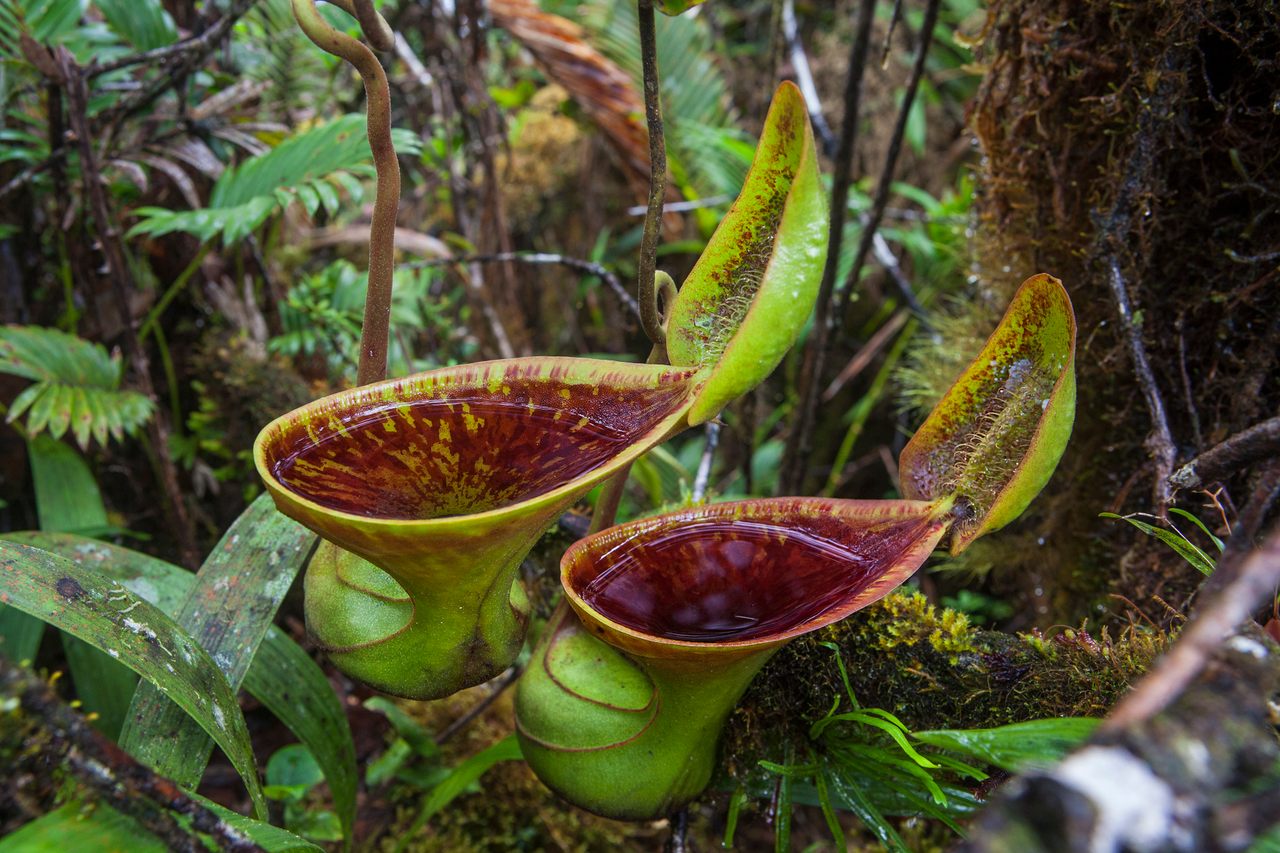They can be found only in Borneo
Carnivorous plants have always been fascinating because of their strange behavior that consists in feeding themselves with organisms such as other animals rather than surviving like other plants.
However, according to this article, the truth is that these carnivorous plants evolved to eat vertebrates and even insects in regions of the earth where more conventional plant foods, such as nutrient-rich soil, are not always available. The existence of carnivorous plants is not evil. From the various midge-eating butterworts of England’s fens to the enormous Attenborough’s pitcher plant (Nepenthes attenboroughii), which stands nearly five feet tall and has been known to slay a few rodents in the forest of Palawan, an island in the Philippines, they are in fact marvels of resilience that have adapted to some of the least-hospitable environments on the planet. By the way, Sir David Attenborough, a naturalist, and admirer of Charles Darwin is the plant’s namesake.
The majority of pitcher plants’ 160 or so species have leaves that have developed the capacity to store a viscous digesting fluid. Nectar-attracted prey enters, becomes stuck, drowns, and ultimately decomposes and is absorbed through the leaf walls. Only a few pitcher plant species go one step beyond opportunistic eating. A group of botanists recently described how some Nepenthes species have evolved to obtain their nutrition not from the animals themselves but from the creatures’ waste, notably the nitrogen-rich excretions of mammals, in a research that was just published in Annals of Botany. Even though it may not be the best method, it is absolutely brilliant in ecosystems with limited resources.
For instance, N. lowii can only be found in Borneo’s mountainous cloud forests, which are situated between 5,500 and 8,500 feet above sea level. The stems of this climbing pitcher plant can grow to a height of more than 30 feet, and its individual pitchers are around four inches in diameter. The pitchers stand out for their distinctive shape, which is strikingly similar to a toilet bowl and comes with a lid (part of the leaf that can help keep heavy rain out).
In fact, scientists have known for a long time that mountain tree shrews will commonly poop directly into the pitcher of N. lowii because they are drawn to its delectable secretions. The authors of the new study discovered that pitcher plants that eat insects have considerably lower quantities of nutritive nitrogen in their tissues than toilet-shaped plants.
In fact, coprophagy has helped at least six Nepenthes species spread across the mountains of Borneo not just survive, but also thrive. The plants have evolved to be very effective at trapping the nitrogen found in the droppings of shrews, bats, and rodents in these higher-elevation environments, where low-nutrient soils are typical and insects are scarce. Some of the poop-eating plants that were tested accumulated more high-quality nitrogen than twice as much of their insectivorous relatives.

